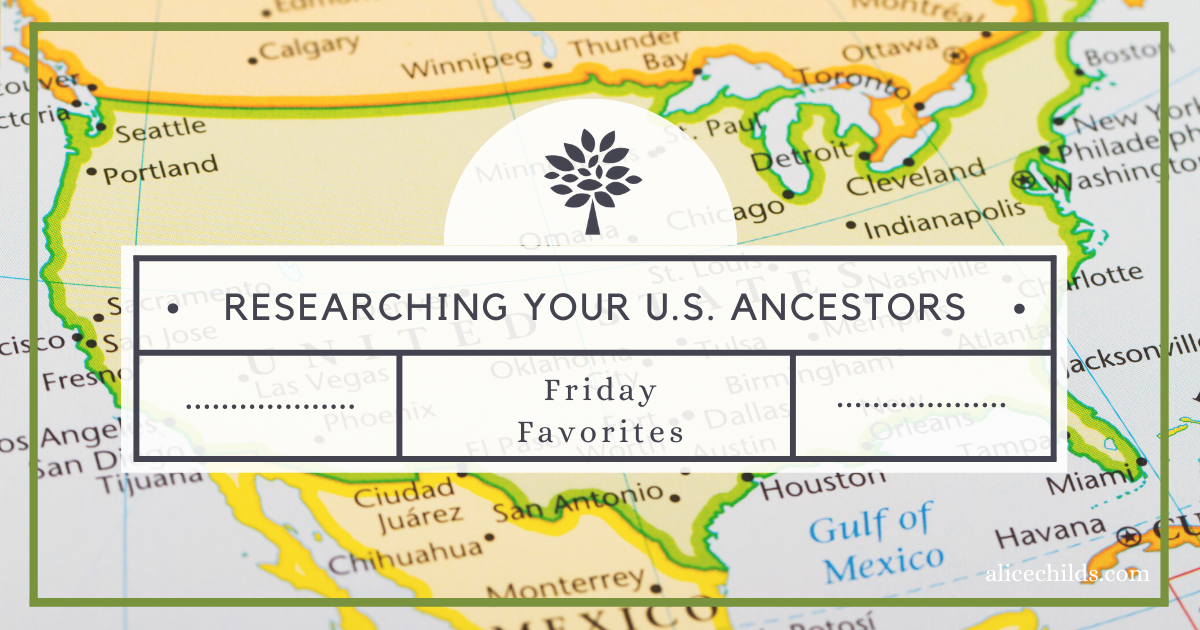
As we in the United States celebrate the birth of our nation on the 4th of July, I thought it would be fun to share four of my favorite sources for discovering more about U.S. ancestors. While a large number of record types exist and I’ve been learning about many of them over the last year and a half, the following are some of the most readily accessible, easy-to-use records that contain genealogically significant information.
Census Records
United States Federal Census records are a great place to begin your research. Federal censuses have been taken every ten years starting in 1790. They are available through 1940 with the exception of the 1890 census, which was almost entirely lost in a fire. Depending on the census year, things you will find in a census could include:
- Name
- Age at a certain point in time
- State or country of birth
- Parents’ birthplace(s)
- Year of immigration (if relevant)
- Street address
- Marriage status and years of marriage (if relevant)
- Occupation(s)
- Value of home and personal belongings
Census records are also a great source for putting families together. Beginning with the 1850 census, all members of a household were listed, and from the 1880 census forward, each person’s relationship to the head of household was included.
Search for your ancestors in federal census records at FamilySearch by navigating to Search > Records and typing “United States Census [year]” in the Find a Collection field on the lower right side of the screen. At Ancestry, go to Search > Census and Voter Lists to search for your ancestor in census records.
In addition to Federal Census Records, many states also took state censuses. Learn whether your state of interest ever took a census by logging into FamilySearch and navigating to the Research Wiki. Type “[State Name] Census” into the search bar to learn what censuses are available for your state of interest.
Vital records
Vital records are records created at the time of birth, marriage, are death. Information you might find on vital records includes:
- Birth, marriage, and death dates
- Full name
- Parent names including mother’s maiden name
- Residence
Vital records began being kept in different years in different states. Visit the United States Vital Records page of the FamilySearch Research Wiki for a clickable list of states. Choose your state of interest to learn when vital records began and where to access them.
Many towns and churches also kept a record of births and baptisms, marriages, and deaths. If vital records are not available for your ancestor, you can use these records instead. Links to online collections and compiled databases of these records will also appear on the vital records page for each state.
Cemetery Records
Cemetery records are a wonderful resource that can provide a great deal of information about our ancestors. While many cemeteries have sextons that keep the records locally, there are a few websites devoted to capturing photos and information from cemeteries all over the United States (and, in fact, all over the world). Two of my favorites are Find a Grave and Billion Graves. Things you might find about your ancestor on one of these sites include the following:
- Birth, marriage, and death information
- Names of parents and siblings
- Clues to military service, religion, membership in an organization
- Names of other people with the same surname buried in that cemetery
Memorials at these sites often include photos of the headstone, and some memorials even include a photo of your ancestor and their obituary or life history.
Draft Registration Cards
During World War I and World War II, millions of men registered for the draft. The resulting records are known as draft registration cards. These cards are a valuable source of genealogical information about male ancestors that lived during this time period. Types of information that might be found on draft registration cards includes:
- Full name
- Home address
- Date and place of birth
- Age, race, and country of citizenship
- Occupation and employer
- Physical description (hair and eye color, height, disabilities)
- Additional information such as address of nearest relative, dependent relatives, marital status, father’s birthplace, or previous exemption from service
- Signature
Access draft registration cards at FamilySearch by navigating to Search > Records and typing “[State] draft” in the Find a Collection field on the lower right side of the screen. At Ancestry, access World War I Draft Registration Cards here and World War II Draft Registration Cards here.
Whether you are a beginner or a more experienced researcher, these five record types will be valuable as you begin to research your United States ancestors. Once you have mastered these records, you will be able to dig deeper into additional record types including land, probate, military, immigration, tax, newspapers and directories, and more. The availability of an abundance of records makes it an exciting time to explore the lives of your U.S. ancestors. Happy Independence Day everyone!
